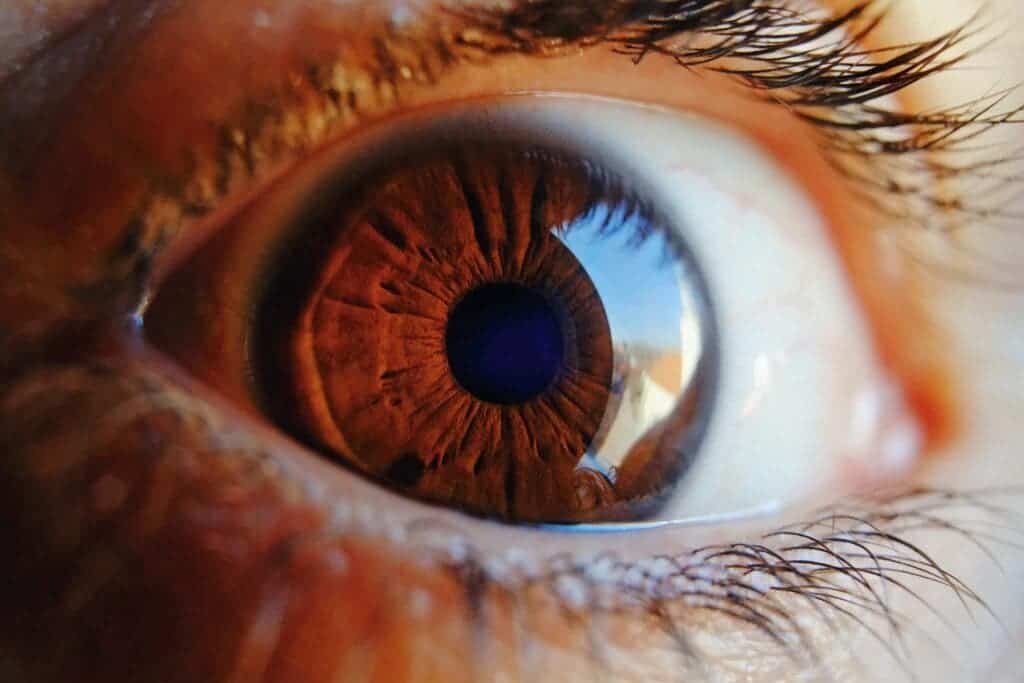Bees can sense the earth’s magnetic field, snakes can detect thermal radiation from the body of their prey, and jewel beetles can sense forest fire from as far as 10 miles (16 km). But humans aren’t too shabby, either. We can do a lot of unique things (though reading memes all day doesn’t count) as well, and some of our senses are truly remarkable. After all, senses are an important part of human biology, and they’re an important part of what helped us become the dominant species on the planet in the first place. So let’s explore them in more detail.

Senses collect information from our surroundings and ensure our survival, for instance, if you are in a jungle and a hungry tiger is following you then until you sense the tiger’s presence, you won’t be able to think of running away from it. It is because of your senses you are able to see your kids growing, taste all kinds of food, enjoy cuddling your pet, hear music, smell flowers, and feel connected with your environment. Therefore, it’s time you start knowing about your senses in detail.
Here is an overview of the five primary human senses and some secret ones:
The sense of touch
The skin is the largest organ of the human body (the skin of an average human adult could be two square meters in area) and it is composed of numerous receptors that are responsible for making you feel touched, hugged, shaken, beaten, loved, caressed, pinched, etc. Our ability to sense vibrations, electric shock, temperature, or pressure change is believed to be a part of touch. But there’s more to touch than meets the eye.
For instance, one study found that touch also plays an important role in strengthening human interaction, bonding, and health as it can trigger our brain’s orbitofrontal cortex which is responsible for generating feelings such as compassion.
The power of touch can be understood from an experiment conducted by American psychologist Tiffany Field. She studied the effect of touch therapy on two groups of premature babies. During her experiment, she found out that the group of premature babies that received touch therapy sessions after birth witnessed a 47% increase in their weight as compared to the other group that was subjected to only regular medical care. Another study from the University of Dundee highlights that one of the reasons why a newborn is strongly bonded to its mother is that even before birth, the child learns to sense its mother’s touch. From within the womb, a child can recognize if it’s the mother or someone else touching her mother’s stomach.
We don’t often think about our sense of touch, but it’s always with us. In one sense, it’s our most intimate way of interacting with the surrounding environment.
The power of smell
The roof of our nose has a patch of olfactory sensory neurons that consist of odor receptors. These receptors sense the smell of different chemicals present in our environment and send signals to the olfactory bulb from where the signals are transmitted to the olfactory region of our brain for identification. Interestingly, olfactory signals also pass through our brain’s limbic system which is responsible for managing memories and emotions, therefore sometimes memories are found to be triggered by certain odors. According to experimental psychologist Pamela Dalton, “our experience with odors is typically where odor is the backdrop or context for a person, place, or emotional state”.
The sense of smell is so developed in humans that an average person’s nose comes naturally equipped with 400 olfactory receptors and it can distinguish between one trillion types of odors. However, with old age, olfactory power in humans is affected so much that by the age of 80 years, 75% of individuals lose their ability to recognize many different smells.
Smell is often underrated — much of what we think of as being taste is actually smell. Try holding your nose while eating different flavored foods. Doesn’t really taste the same, does it/
The importance of sight
American writer Henry David Thoreau once said “the eye is the jewel of the body”. Eyes are indeed no less than any magical jewel because, without them, a person’s life is surrounded by darkness. The astonishing sense of sight is the result of our eye’s complex mechanism and our brain’s ability to interpret visual signals.

At first, light enters from an object into our eyes through a transparent protective layer called the cornea. From there the light enters the pupil that serves as an opening to the iris (eye shutter that regulates the amount of light entering into our eyes). The eye lens located behind the iris reflects the light on the retina (the screen of our eye which consists of photoreceptor cells and where the image is formed). The optic nerve which is located at the back of the eye receives visual signals from the retina and transmits the same to the brain which finally interprets the signals from the eye into an image, and that is how we see the world around us.
A study reveals that individuals who are born blind may have other senses more developed than sighted people because, in the absence of sight, the brain rewires itself to use all the information available to it in the best way possible. For example, a blind person may have a stronger sense of smell than a person who can see well. Similarly, blind people can also have sharper memory and better linguistic skills than sighted people.
The delight of taste
The human tongue can have as many as 10,000 taste buds, and all the taste buds get replaced every 10 days. If you are a foodie, you know good taste is also a luxury. Moreover, the sense of taste is found to be linked with our involuntary nervous system, so taste can also affect the way we feel both physically and mentally. According to research published in Nature, the taste of your food can change your mood, and by finding the relationship between cerebral fluids and your sense of taste, researchers might discover the treatment for various mental disorders including depression.

An experiment conducted on 100 students of North Dakota State University concluded with interesting results: people who like sweet food more are more likely to help others. The study suggests that eating sweet candies or talking about such food items can increase the acceptance of a person. On the other side, people who ate bitter things during the experiment were found to be harsh and less supportive.
The five primary tastes sensed by our tongue are bitter, sour, salty, sweet, and umami (savory taste that you experience while eating cheese, mushrooms, meat, etc). Surprisingly, “spicy” is not considered a taste type, instead, it is referred to as a painful sensation.
The sharpness of hearing
Sounds give us joy and pleasure, and they help us communicate with those around us. They also help us keep the surrounding world in check and understand what’s going on around us. Sound waves from our surroundings enter into our ears, reach the tympanic membrane (eardrum), and get converted into mechanical vibrations. Ear ossicles named malleus, incus, and stapes that are located in the middle ear take the vibrations further through the internal cavities of the ear.
Humans can hear sound falling in the range of 20 Hz and 20,000 Hz (zero decibels to 130 decibels), and any sound that exceeds 90 decibels is harmful to human ears. Apart from receiving sound waves, the human ear also plays an important role in maintaining body balance and posture. The inner ear has a specialized organ called the ampulla which consists of balance receptors known as crista, these receptors maintain the sense of equilibrium in humans.
Most of us are really careless when it comes to taking care of our auditory organs — the ears. For instance, most people harp on cleaning the wax in your ears, but you should only do that if you have a condition, otherwise it’s completely harmless. Similarly, did you know that wearing headphones for an hour increases the bacteria in your ears by a factor of over 100?
Other less-known human senses
Here is a list of some unrecognized human senses:
- The sense that allows a human being to understand the movement of his hands, leg, and other body parts is called proprioception. You are able to climb stairs, walk on road, type on your keyboard, and drive a bike without always closely observing the movement of your limbs due to the sense of proprioception.
- The ability of a human being to sense hot or cold in his or her environment is referred to as thermoception. Since we are warm-blooded animals, the sense of temperature is also crucial for our survival.
- You can tell when it’s noon, night, or day without going out because you can sense time, and this ability of a human being to perceive time is called chronoception.
Other human senses such as nociception (ability to perceive pain), and muscle tension sense (regulates the amount of tension in our muscles) are also a part of human biology. All these human senses not only give us a better understanding of our surroundings but also make us aware of the various aspects of being a human.





